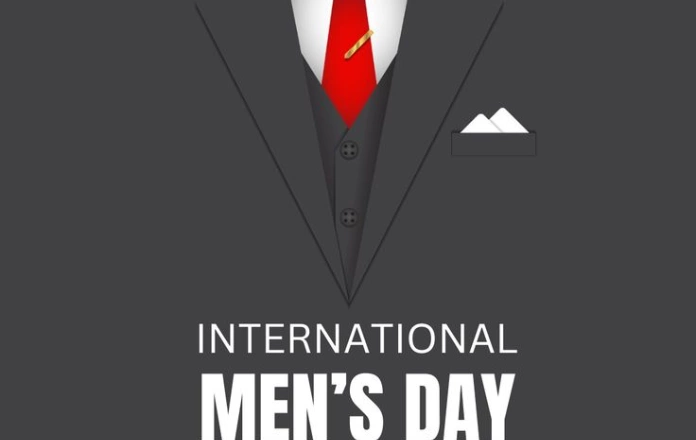Corporate Strategy Posts on Crowch
Every year on November 19, many countries around the world observe International Men’s Day. This holiday is not only about recognizing men’s achievements but also about highlighting their role in society, in families, and in shaping future generations.
🌍 History of the holiday
The idea of International Men’s Day emerged in the 1990s. It was founded by Dr. Jerome Teelucksingh from Trinidad and Tobago, who dedicated the date to the memory of his father — a man who embodied responsibility, honesty, and care. Since then, the celebration has spread across the globe and is now supported in dozens of countries.
💪 Values and goals
International Men’s Day addresses important issues:
- improving the health of men and boys,
- promoting positive male role models,
- fostering gender equality and mutual respect,
- highlighting fatherhood and men’s role in families,
- building a culture of support rather than competition.
The holiday reminds us that true strength lies not only in endurance but also in responsibility, care, and integrity.

👨👩👧👦 Men in family and society
Today, men are recognized not only as providers or protectors but also as partners, fathers, and friends. Emotional maturity, empathy, and the ability to communicate openly are valued qualities. International Men’s Day challenges stereotypes and inspires a vision of a more balanced and supportive society.
🩺 Focus on health

One of the core missions of the day is raising awareness about men’s health. Men are less likely to visit doctors, which often leads to late diagnoses. The holiday encourages attention to both physical and mental health, reminding men that self-care is vital.
🌟 Modern meaning
International Men’s Day is a chance to say “thank you” to the fathers, brothers, husbands, friends, and colleagues in our lives. It is a day of recognition but also a day for open conversation about the challenges men face.
✨ International Men’s Day is more than just a holiday — it is an important step toward creating a fairer, kinder, and healthier world for everyone.
Every last Saturday of November is celebrated as Small Business Saturday, a day that is less about discounts and more about people — the entrepreneurs who dared to follow their dreams, and the customers who choose to support them.
🌱 Small businesses, big dreams
Every small business begins with a dream. A young couple opening a coffee shop with homemade pastries. An artist turning a workshop into a gallery for the neighborhood. A family running a bookstore for generations. Behind every storefront is a story of dedication, risk, and love for what they do.
👩👩👧👦 Closeness and trust
Unlike big chains, small businesses thrive on personal relationships. When we step into a local café or shop, we are often greeted by name, our preferences remembered. This human touch builds a sense of closeness that no supermarket can replace.
🌍 Community impact
Supporting small business is about more than shopping. It is about strengthening the community. Local entrepreneurs often adopt eco-friendly practices, collaborate with neighbors, and create jobs close to home. Money spent locally stays local, fueling growth and resilience.
🙌 How to take part?

- Visit a small store instead of a mall.
- Buy a handmade gift.
- Share a post about your favorite local café.
- Simply say “thank you” to the owner.
Every small act helps preserve the uniqueness and diversity of our neighborhoods.
💖 A symbol of gratitude

Small Business Saturday reminds us that the true value of a business is not measured in size, but in heart. Even the smallest purchases become symbols of gratitude and investments in a shared future.
By celebrating Small Business Saturday, we celebrate people and stories that make our world warmer and more human.
Small Business Saturday began as a local initiative, but today it is becoming a symbol of conscious consumption and sustainable development. In an era of globalization and digitalization, small businesses remain the backbone of the economy and guardians of cultural diversity.
Digital presence
In the past, local shops relied on physical storefronts and street displays, but now they are actively moving online. Social media, marketplaces, and personal websites help entrepreneurs reach customers not only in their neighborhoods but also across the globe. Small Business Saturday highlights that even in the digital age, people still value personal service and uniqueness.
A new generation of consumers
Millennials and Generation Z increasingly focus not only on price but also on the values of the businesses they support. For them, it matters that a company is eco-friendly, transparent, and socially responsible. Small businesses are often closer to these ideals: they use local products, support traditional crafts, and develop green initiatives.
The ecological aspect

Modern consumers are becoming more aware of the environmental footprint of large corporations. Small businesses can offer alternatives: handmade goods, recycled materials, and local products that require less transportation. Small Business Saturday thus becomes not just a shopping day but also a reminder of the importance of sustainability.
Communities and collaborations
Small businesses often collaborate instead of competing, creating joint projects and campaigns. This cooperation strengthens local communities. Cities host fairs, festivals, and workshops where customers can meet entrepreneurs face-to-face and experience the atmosphere of real human connection.
A global future
Although Small Business Saturday originated in the United States, its philosophy resonates worldwide. Supporting local entrepreneurs helps preserve the uniqueness of towns and villages, reduces dependence on global corporations, and makes economies more resilient.

Conclusion
Small Business Saturday is not just a marketing campaign. It is a movement that fosters a culture of conscious choice, supports sustainability, and preserves human values. In the future, as digital technologies dominate, small businesses will continue to remind us that commerce is, above all, about people and their stories.
Small Business Saturday is more than just a shopping day. It is a symbol of supporting local entrepreneurs, showing how small businesses shape the identity of cities and foster trust within communities.
Small business as part of identity
Every city or neighborhood has its own unique shops, cafés, and workshops. These are what distinguish local communities from anonymous malls and chain stores. A corner bookstore, a family-owned bakery, or a handmade craft studio make the streets lively and full of stories. Small Business Saturday reminds people of the importance of such places and encourages them to support them.
Economic and social impact
Buying from local entrepreneurs not only stimulates the economy but also invests in the development of one’s own environment. Money stays within the community: small business owners employ local residents, work with regional suppliers, and participate in civic initiatives. This creates a “circle of support” that strengthens the overall resilience of the economy.

Personal connections and trust
Small business is not just about goods and services — it is about relationships. Customers know the owners by name, and sellers understand the tastes and habits of their clients. This closeness creates a level of trust that big chain stores cannot match. Small Business Saturday emphasizes that every purchase is also a step toward strengthening human connections.
The role of social media
In the digital era, the internet helps small businesses become more visible. During Small Business Saturday, entrepreneurs actively use social media to showcase their products, share their stories, and find new customers. The hashtag #ShopSmall has turned into a global symbol of solidarity and support.

A global context
Although Small Business Saturday originated in the United States, its idea resonates worldwide. Many countries are developing similar initiatives, because supporting small businesses is a universal value. In a world of globalization and corporate dominance, local shops remind us of diversity and cultural heritage.
Conclusion
Small Business Saturday is a day when buying from a small shop becomes an act of support, and visiting a local café turns into an investment in the community’s growth. This holiday demonstrates that the economy is not just about numbers and discounts, but also about people, their dreams, and their efforts. By supporting small businesses, we preserve the uniqueness of our towns and strengthen human connections.
Small Business Saturday is an annual event in the United States held on the Saturday after Thanksgiving. It was created as an alternative to the massive shopping days of Black Friday and Cyber Monday, aiming to draw attention to small businesses that are often overshadowed by large corporations and online giants.
Origins
The initiative began in 2010, launched by American Express. Its goal was simple: to remind consumers that local shops, cafés, bookstores, and workshops are an essential part of communities. From the start, the campaign gained support from government institutions, city authorities, and community organizations. In 2011, the President of the United States officially recognized Small Business Saturday as an important event for the economy.
Purpose and idea
Unlike Black Friday, which emphasizes global brands and mass discounts, Small Business Saturday highlights the value of shopping with local entrepreneurs. When people buy from small shops or use local services, they directly support their neighbors, create jobs, and strengthen the regional economy.

The slogan of the campaign is simple: “Shop Small.” This movement encourages people to make conscious choices and remember that every purchase supports a real person, not a faceless corporation.
Importance for society
Small businesses are the backbone of any economy. They include artisans, family-owned restaurants, local producers, artists, and farmers. Their work brings diversity to goods and services, and it shapes the unique character of every neighborhood and city.
By supporting small companies, consumers help preserve cultural and social diversity. Studies also show that money spent in local stores is more likely to stay within the community, as small business owners often use local suppliers and hire local workers.
Modern trends

Today, Small Business Saturday has grown into a nationwide movement. Across the country, festivals, fairs, workshops, and special promotions are held. Many cities create online directories of local entrepreneurs, making it easier for shoppers to find and support them.
Thanks to social media, the campaign has gained international recognition. Under hashtags like #ShopSmall and #SmallBusinessSaturday, people share photos of purchases, tell stories about their favorite shops, and build a community of support.
Conclusion
Small Business Saturday is more than just a shopping day. It is a reminder that behind every small shop stands a person with a dream, a family, or a team of dedicated people. By supporting small businesses, we invest not only in products and services but also in the people who create the atmosphere of our towns and drive the economy forward.
📈 Rethinking AI for Business: Less Complexity, More Efficiency
In the ever-evolving world of AI-driven business optimization, companies are constantly looking for smarter ways to make decisions — without adding unnecessary technical complexity. Traditional reinforcement learning (RL) techniques have proven powerful, but they often come with a hidden cost: computational overhead and instability caused by their reliance on critic networks. Group-Relative Policy Optimization (GRPO) offers a refreshing shift. Originally successful in large language model alignment, GRPO brings a critic-free, cluster-based approach to reinforcement learning. It replaces heavy critic networks with lightweight group-and-action baselines, making training faster and more efficient — a huge win for businesses deploying AI in real-time systems. This article expands on earlier work exploring clustered RL policies for business applications and investigates how GRPO can be adapted to deliver personalized promotions and smarter decisions in the real world.

🤹 The Business Challenge: Many Goals, One Policy
Unlike traditional AI research problems, real-world businesses don’t have the luxury of optimizing for a single metric. A company might aim to:
• Boost revenue
• Personalize user experience
• Maintain fairness and transparency
• Stay consistent with brand voice
These goals often conflict, yet must be handled simultaneously by a single decision-making system. This is where most RL frameworks struggle. Standard models like Proximal Policy Optimization (PPO) tend to optimize for one dominant objective and rely on critic networks to evaluate every action — a setup that introduces delay, instability, and significant resource consumption. GRPO sidesteps these issues elegantly by leaning on group-relative comparisons within customer clusters. Instead of comparing every individual to an absolute critic estimate, the system learns by observing how similar individuals respond to actions, which dramatically simplifies the reward structure.

🧠 Why Critic-Free Learning Matters
In classic RL setups, a critic network estimates the expected value of actions, guiding the agent’s learning. But in business contexts, especially those using offline customer logs, critic learning becomes noisy, expensive, and sometimes outright misleading. GRPO removes the critic entirely. Instead, it groups users based on shared attributes (demographics, behavior, engagement level) and tracks the relative performance of actions within each group. This “in-group comparison” serves as the signal for learning — no critic needed.
Benefits include:
• Lower variance in policy gradients
• Faster convergence
• Reduced compute requirements
• Better alignment with human-level goals, like fairness across segments
These features make GRPO a strong candidate for practical, production-grade decision engines that need to run on constrained infrastructure without sacrificing performance.

🛒 Case Study: Personalized Promotions at Scale
Let’s take an e-commerce scenario: a company wants to serve personalized offers to users, balancing conversion rates with customer lifetime value and brand equity.
Traditional RL might recommend deep personalization for every individual, but that often leads to overfitting or inconsistent messaging. With GRPO, users are first clustered — say, by purchase history and browsing behavior. The algorithm then compares offer performance within each group, learning which promotions outperform the others without relying on an external critic model.
This creates a system that:
• Learns faster using real-world data
• Generalizes better across user segments
• Maintains a coherent brand experience
Importantly, this strategy works even offline, using historical logs — making it ideal for companies without access to real-time interactions.

💥 Is It All or Nothing?
Is making sustainability affordable under capitalism truly impossible? Or are we just not looking hard enough at the problem — or more importantly, at the opportunities?
Architect and sustainability advocate Smith Mordak recently raised this challenge in a thought-provoking piece, suggesting that truly ethical, sustainable, and affordable products simply cannot exist under capitalism. Mordak’s argument is rooted in a fictional — yet painfully realistic — story: an entrepreneur begins with a bold vision for a sustainable chair made from ethical materials and fair labor. But as scale increases and cost pressure mounts, the vision crumbles. Cheaper, less sustainable materials are introduced. The price goes down — and so does the mission.
Mordak concludes that capitalism itself is the culprit. It’s not just a product design issue — it’s a system design failure. The proposed solution? Rethink the entire economy: implement universal basic income, embrace alternative currencies, enable co-living models, and challenge traditional value exchange.

🧠 But Do We Have to Abandon the System?
The core question remains: Must we dismantle capitalism to achieve sustainability and affordability? The answer, especially for designers and innovators, is not so black and white. While we shouldn’t ignore the deep-rooted issues in current systems, we also can’t afford to tell the next generation of creators that the only way to act is to wait for a new economy to emerge. In fact, framing sustainability as always more expensive can discourage innovation. It boxes in designers, making them believe their only option is to create expensive, niche, eco-friendly products for wealthy customers. It limits the very kind of creative thinking needed to hack the system from the inside.

👟 Sustainability Can Be Affordable — Real-World Proof
Some brands are already proving that sustainability and affordability can coexist. Veja, the sneaker brand, is a prime example. Despite using ethically sourced materials and paying fair wages, Veja keeps prices competitive with major mainstream brands.
How? Two bold choices:
1. Zero advertising — freeing up funds typically spent on marketing.
2. Slow growth — scaling sustainably instead of chasing fast profits.
This mindset flips the typical business model, reallocating resources from brand noise to product integrity. It’s business model innovation — not utopian dreaming — that creates new possibilities. Pandora, the world’s largest jewelry company, made a similar move by switching to 100% recycled metals. Despite a $10 million cost increase, it didn’t raise prices, choosing instead to cut internal inefficiencies. These are the real-world hacks that Mordak’s argument overlooks.

🧃 Packaging, Food Waste, and Closet Apps — More Affordable Innovation
Across industries, we’re seeing other creative ways to make sustainability accessible:
• Refillable packaging: Supermarkets like Ocado and M&S offer discounts for reusable packaging — a win-win for both customers and the planet.
• Too Good to Go: This app rescues food from going to waste while helping people eat affordably.
• Digital wardrobe apps: These tools help users “shop their closet,” extending the life of clothing and reducing overconsumption.
• Beni: A free browser extension that helps people buy secondhand more easily, promoting reuse without added costs.
All of these examples show that smart design, when aligned with new digital tools and values-driven strategy, can stretch the boundaries of what’s possible — even under capitalism.
🛠 Hacking the System Starts with Mindset
Designers are more than stylists — they are systems thinkers. And while systemic transformation is essential, we shouldn’t treat today’s economy as completely immovable.
Designers should approach their work with a “system hacker” mindset, as described by von Busch and Palmas — modifying the rules, bending limitations, and finding unexpected methods to turn capitalism’s weaknesses into design opportunities. Think of it as ethical jiu-jitsu — using the system’s own force to redirect its energy.
By zooming out to see the larger economic and social context — and then zooming in to innovate at the business model level — designers can ask better questions, spot leverage points, and develop strategies that don’t just rely on higher prices as the only measure of sustainability.

🔍 The Trap of “Should” Thinking in Strategy
Too often, business leaders approach strategy with the same mindset they’d apply to a checklist — looking for a definitive answer to how things should be done. Questions like “Should we have a single strategy cascade or several?”, “Should startups do strategy or just execute?”, or “How often should we review our strategy?” pop up frequently.
But here’s the truth: there’s no universal “should” when it comes to strategy. No perfect frequency. No golden rule about number of cascades. And certainly no one-size-fits-all template that neatly applies to every business at every stage.
What really matters is starting from the reality of your situation — not an idealized abstraction of how strategy ought to be.

🧭 Strategy Already Exists — Whether You Name It or Not
Many executives fall into the trap of believing strategy only exists if they consciously create it. But in reality, every organization already has a strategy, even if it’s informal, fragmented, or unspoken.
Your company makes choices every day: where to focus, how to compete, what capabilities to build. These decisions define your de facto strategy. Whether you document it or not, your business has a Where-to-Play (WTP) and a How-to-Win (HTW). Even startups — often considered too fast-paced for strategic exercises — are constantly making consequential choices that shape their strategy from day one.
The real challenge isn’t creating strategy from scratch — it’s recognizing the one that already exists, making sense of it, and improving it where necessary.

🛠 The Only “Should” That Matters: Start with Reality
Let’s go back to the reader’s question about cascading strategy across one corporation and four business units. Should he do five cascades? One? Three?
The answer lies in the actual strategic alignment between the units. The reader needs to reverse-engineer the current strategies using the strategy choice cascade as a tool. If the strategic intents, capabilities, and competitive positioning of all units are aligned, one cascade might be enough.
Take a (fictional) example of a food company with three divisions: pasta, pasta sauce, and parmesan cheese. If all three divisions share the same aspiration — say, becoming the premium natural choice in their category — and follow similar paths to market, a single cascade might suffice.
But what if the parmesan cheese business operates in a different supply chain, faces distinct competitors, and targets a different customer base? In that case, forcing it to fit into the corporate cascade would hinder its success. That unit would need its own cascade — because reality demands it.

🧠 Fast-Moving Doesn’t Mean Strategy-Free
Some leaders claim their environment is too fast-changing to pause for strategy. But speed doesn’t erase the presence of strategy — it just makes it harder to spot. Even in rapid environments, choices are still made. Those choices still amount to a strategy. Ignoring or avoiding the strategic implications doesn’t make them disappear — it only weakens your ability to steer the business.
Instead, reverse-engineer what’s really happening, then evaluate: Are your current outcomes aligned with your goals? If yes, continue. If not, don’t wait for the next quarterly offsite — make new choices now.
📅 How Often Should Strategy Be Reviewed?
Here’s another recurring question: “How often should we revisit our strategy?”
Once again, the answer depends on outcomes. Strategy is not a calendar event — it’s the pattern of your choices. If those choices are driving results you’re happy with, there’s no rush to change them. But if they’re not delivering what you want, it’s time to reassess — no matter when your last review was.
There’s no magic number of months or years. There’s only a need for clarity, alignment, and performance. That’s your signal.

🧩 Strategy Is What You Do — Not What You Say
At the end of the day, strategy isn’t about crafting perfect mission statements or polished PowerPoint decks. It’s about making deliberate, consistent choices in pursuit of a meaningful aspiration.
Don’t let misplaced shoulds steer you toward abstractions. Instead, start with what your business is actually doing. Understand it. Question it. Then improve it — or keep it, if it’s working. The only rule that matters? Be grounded in reality.
And the strongest kind of influence is example. People don’t follow those who simply speak louder. They’re drawn to those who act, especially when it’s difficult. Who stay true to themselves. Who remain calm in tension. Who don’t break under criticism, but learn from it. Who don’t put themselves at the center — but become a source of support for others.
A true leader isn’t always the one in the spotlight. More often, it's the person you barely notice — yet without them, nothing works. They don’t seek recognition, they seek results. They don’t build a cult of personality — they create an environment where others can grow. They understand that the stronger the team, the stronger the system. And they’re not afraid if someone around them shines brighter. Because their strength isn’t in dominance, but in trust.
A leader is someone who serves, not someone who controls from above. It may sound paradoxical, but service is the deepest form of leadership. Not submission, but a conscious choice to place the purpose, the team, the mission above one’s own ego. That doesn’t mean abandoning yourself — it means seeing something more than just yourself. A leader asks questions with no easy answers. They can go against the flow — not out of defiance, but out of integrity.
Often, the leader isn’t the one who knows the path — but the one who dares to search first. They take the unclear road, make mistakes, fall, get up, and share what they’ve learned. They’re not afraid to seem imperfect. Their strength lies in vulnerability. In being honest with themselves. They can say: “I don’t know, but I’ll figure it out,” “I made a mistake, and I’m growing from it,” or “This is hard, but I’m still going.” That is the kind of maturity the world needs — beyond slogans, beyond surface-level solutions.
A leader isn’t afraid to trust. Trust is always a risk — a chance you’ll be let down, misunderstood, or disappointed. But without trust, nothing moves. Control may create structure, but not inspiration. And it’s inspiration that brings people in. A true leader knows: engagement doesn’t come from fear — it comes from meaning. And they look for meaning — in work, in people, in each step they take.

Leadership is an internal stance. It can’t be forced. It can’t be assigned. You can only take it on when you understand that you’re ready to be responsible — not just for your actions, but for what comes after. Not for reward. Not for praise. But simply because you know, quietly, deeply: “I need to be here.”
Real leadership isn’t loud. It’s often quiet — but steady. It doesn’t demand attention, but creates the space for others to grow. And that’s why it matters. Because in a world where everyone is chasing outer success, the leader is the one who stays faithful to an inner compass. Who doesn’t build around themselves, but around meaning. Who doesn’t call others to follow — but simply walks. And by walking, lights the way for others.

Profiles, accounts, avatars, bios, stories — our digital identity has become an extension of who we are. We live online almost constantly, sharing our thoughts, showcasing our lives, presenting carefully crafted versions of ourselves to the world. Social platforms encourage us to be visible, polished, interesting, and engaged. But as we do that, a deeper question quietly emerges: Who are we when the screen goes dark?
Our online self is a version of the truth — but not always the full truth. We filter what we show. We choose flattering angles, clever captions, emotionally safe disclosures. We’re not necessarily lying — we’re editing. Curating. Trying to control perception in a world that constantly asks us to be both authentic and optimized.

Sometimes, we spend so much time managing the digital version of ourselves that we lose contact with the person underneath. The version with doubts, awkward moments, contradictions, pauses. The version that isn’t always clear, entertaining, or productive. Gradually, the boundary between our real self and our digital presence begins to blur. We start to seek validation from outside, measuring our worth in likes, follows, shares, and reach.
But what happens when no one’s watching?
Many of us don’t know how to answer that — because our sense of self has become so intertwined with how we’re perceived. And this can quietly shape our mental health, our confidence, and even our behavior offline. We may begin to act like our profile, rather than our full, complex selves. We might hesitate to show vulnerability, change direction, or even rest — because it doesn’t “fit the brand.”
This doesn’t mean social media is inherently harmful. Digital identity can be empowering, expressive, and connective. It allows people to tell their stories, build communities, challenge norms. But when digital performance overshadows lived experience, we risk becoming disconnected from our inner compass.
Reclaiming the self beyond the screen is now a crucial digital skill. It means asking:– What do I value when no one is watching?– How do I define myself without content, status, or approval?– Can I be alone without feeling invisible?
It also means allowing for quiet moments, for unshared memories, for personal rituals that don’t need to be posted. It means building confidence that isn’t dependent on algorithms. It means remembering that your worth is not calculated by impressions, but felt in presence — with yourself, and with the people in your offline world.

In the age of endless sharing, true freedom may lie in what you choose not to post. In what you keep for yourself. In returning, again and again, to the version of you that doesn’t need an audience to be real.